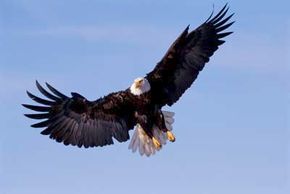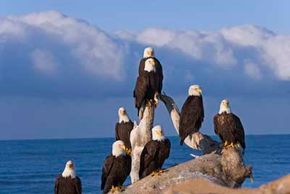Key Takeaways
- The bald eagle was removed from the endangered species list after extensive conservation efforts, including the banning of DDT in 1972 and protection under the Endangered Species Act.
- These measures helped increase the population from 417 nesting pairs in 1963 to nearly 10,000 pairs by 2007.
- Key actions included legal protection, habitat preservation and breeding programs, leading to a successful recovery of the species.
Benjamin Franklin famously got his feathers ruffled when the Second Continental Congress selected the bald eagle to symbolize the fledgling United States. In a letter to his daughter, Franklin charged that the eagle has a "bad moral character" because it lazily steals food from hawks and is easily frightened when approached by smaller birds [source: Franklin Institute]. Instead, Franklin wanted to substitute the turkey, despite it being "a little vain and silly." At least, he reasoned, the gobbler displayed courage by procuring its own dinner.
Franklin was correct regarding the bald eagles' cafeteria-bullying habits. The birds usually nest near freshwater sources, such as rivers and lakes. While they'll go fishing on their own some of the time, a majority of their diet comes from foraging carrion and snatching meat away from other animals [source: National Geographic]. Eagles prefer fish, but will also eat waterfowl and small mammals on occasion.
Advertisement
In 1782, when the eagle ascended to its position as the national symbol, around 100,000 nesting pairs lived throughout the United States in habitats ranging from Alaska to northern Mexico. By 1963, the U.S. Fish and Wildlife Service estimated that only 417 nesting pairs remained in the lower 48 states. The government's efforts to protect the dwindling avian species began in 1940 with the passage of the Bald Eagle Protection Act, which made it a crime to take or sell the eagles. But it would take 40 years of concerted bald eagle conservation efforts to usher the species back from the brink of extinction.
Advertisement

